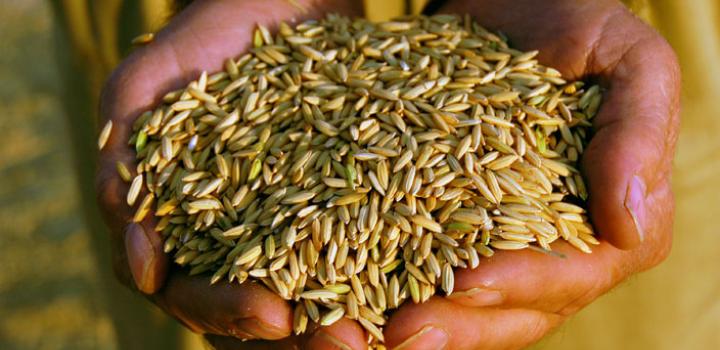Arkansas rice scientists perfect parboiling method; global rice value to top $274 billion by 2027
by October 27, 2021 4:37 pm 841 views

The first archaeological evidence that rice was cultivated for human consumption appears nearly 10,000 years ago in China. Throughout the years, it has become a staple food for billions of people around the world, but it can be a problem in terms of nutrient intake. A group of food scientists in Arkansas hope they’ve solved that problem.
Scientists at the Arkansas Agricultural Experiment Station have developed a new parboiling process that reduces water use up to 75% and improves nutrient content in rice.
Annegret Jannasch, a food science graduate student in Dale Bumpers College of Agricultural, Food and Life Sciences at the University of Arkansas, developed the new parboiling method for her graduate thesis research. She works with Ya-Jane Wang, professor of food science for the experiment station and Bumpers College.
Rice is a staple food for billions of people around the world, Jannasch said. Many people, especially in Africa and southeast Asia depend on rice for up to 70% of their daily calorie intake.
Rice consumption worldwide during the next year is projected to rise by 2.8 million tons to more than 510 million tons, according to the U.S. Department of Agriculture. The global value of rice is projected to rise to $274 billion annually by 2027.
Rice as a primary food can cause problems, Jannasch said. Rice is deficient in many important micronutrients.
“Iron, calcium, folic acid and vitamin A play important roles in human health,” Jannasch said. “Iron is a key component of hemoglobin, which carries oxygen around the body in the blood. Calcium helps fight osteoporosis, high blood pressure and colon cancer.”
Jannasch added that inadequate intake of folic acid increases risks of birth defects, and vitamin A deficiency can weaken the immune system.
“Where rice is the primary food, micronutrient deficiency disorders are widespread,” Wang said.
Rice can be fortified with inexpensive essential nutrients, Wang said, but current technologies — dusting the grains with a nutrient powder, adding a waxy coating of nutrients and extrusion of reconstituted grains — all have drawbacks, Wang said. Nutrients are lost during cooking and the fortification processes make the taste, color or texture of the rice less acceptable to consumers.
Jannasch investigated parboiling as a method for fortifying rice.
“It’s estimated that 15 to 20% of the world’s milled rice is consumed as parboiled rice,” Jannasch said.
Parboiling offers higher nutrient retention rates than other methods and retains more favorable flavor and texture characteristics, Jannasch said. It’s an easy, three-step process — soaking the rice in a nutrient-enriched bath, steaming the rice and then drying it.
“But existing parboiling methods also use excess water that can present an environmental hazard if discarded without treatment,” she said. High volumes of water may also be unavailable in many arid regions.
Jannasch investigated a reduced-water parboiling process that places rice and a nutrient-enriched water bath in vacuum-sealed bags. The sealed bags are then soaked in a water bath to apply pressure that helps the nutrients migrate into the rice endosperm.
Jannasch and Wang analyzed the reduced water-prepared rice for nutrient content and quality issues and compared it with fortified rice parboiled in the conventional, excess water method. They also compared nutrient and soluble solids in wastewater.
The reduced-water parboiled rice compared favorably for nutrition and quality, Jannasch said. It also reduced water use by 75% and wastewater volume by up to 89%.
“This method was efficient for fortifying parboiled rice with essential micronutrients and had minimal effects on rice quality,” Jannasch said.
Wang obtained funding from Oxfam International for Jannasch to scale up her limited water parboiling process to community scale for use in Burkina Faso, an African nation with limited water resources. She has developed a system of placing sealed vacuum bags of rice and enriched water baths in a 55-gallon drum for soaking in boiled water before steaming and drying.
The method can be used for producing nutrient-fortified parboiled rice in local communities with limited water resources. Not only does the process use less water than conventional parboiling, Jannasch said, but both the nutrient baths and the water in the soaking tanks can be reused to fortify and parboil more rice, to conserve even more water.
